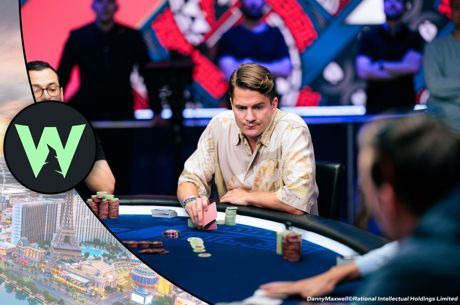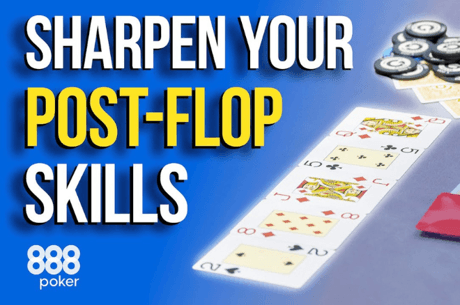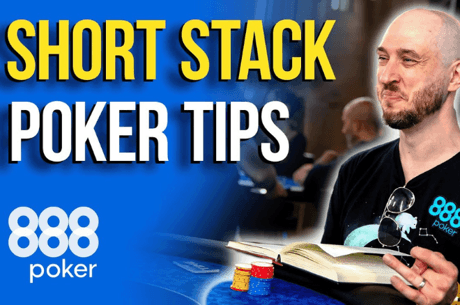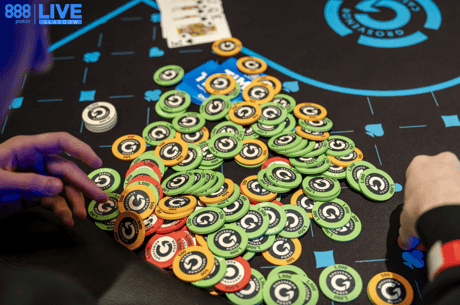How To Recognize (and Beat) the Unbluffable Player

This week I’ve been catching up on episodes of the PokerStars show called Shark Cage. It’s a series of single-table invitational tournaments, populated by a mix of professional poker players, celebrities, and one amateur online qualifier per game.
Like most made-for-TV poker shows, the structure is ridiculously fast, and the content is massively edited to show only the most dramatic hands. I usually don’t bother with such programs. In my view, the only thing that makes this one interesting enough to watch is the twist that gives it its title — the “shark cage.”
The full details of how this twist works don’t matter too much for this article. Suffice it to say that there is a penalty (spending a round in a literal cage) for being bluffed, and the same penalty for being caught bluffing. These special rules give players a large added incentive to bluff, but simultaneously give them a large added incentive to call suspected bluffs.
Watching this play out is interesting, because you can see players wrestle with balancing these competing forces. You can almost read their faces as they decide whether to try a bluff, knowing that the reward for pulling it off is greater than usual, but also knowing that their opponents will be more likely than usual to call. At the same time, you can see them wrestle with making thin calls, knowing that opponents are more likely to be bluffing.
In Episode 3, Victoria Coren Mitchell playfully chides Maria Ho for making a thin call. “The vengefulness it must take to call me with that hand!” says Coren Mitchell. “It’s only because of the cage. You would never call me with that if it wasn’t for the cage…. Oh, I misfactored the cage!”
The point here is that the rules tweak makes players much closer to being unbluffable than they would usually be. For that reason, the show provides a worthwhile study for how to handle players in regular games who are effectively unbluffable.
What kinds of players are effectively unbluffable? They come in different varieties. I can think of at least five.
How to Recognize an Unbluffable Player
First, you have the very common recreational player who simply hates to fold — the proverbial calling station. This is the guy who plays nearly every hand because playing is more fun than folding. As a result, he often gets himself deep into a pot with nothing, and sees a bluff as the only way to win the pot. Because he bluffs a lot, he tends to think that everybody else does, too — hence his tendency to call with weak holdings when he really should know that he’s beat.
Another unbluffable type, I’ve found, is a male player who has his wife or girlfriend sitting at his side watching him play. Folding entails wounded pride (or at least he thinks so), and the thought of being humiliated by being shown a bluff after he folds is completely unbearable. So he calls when he shouldn’t. Better to lose money than to lose face, as these guys weigh things.
A third unbluffable kind is the drunk. I’m not sure I can adequately explain the psychology behind this, but experience shows that alcohol turns ordinarily tight, careful players into ones who try to play every hand and call every bet.
Fourth, you should deem unbluffable any player who, for whatever reason, seems to have a vendetta against you. Maybe you put a bad beat on him. Maybe you made some comment that he took as a personal affront. Whatever happened, he is targeting you for payback. He may try to bluff you, but he will not be bluffed by you.
Finally, people who are on tilt after losing a large pot — especially on a bad beat — are effectively unbluffable. The same goes for those who are stuck badly in a session. Both kinds of players are looking for any possible way to win pots to regain both psychological and fiscal equilibrium. They may have passed the point where further losses will increase their pain, and desperation takes over their strategy. Fold, when there’s a 5% chance that you’re bluffing? Not on your life!
How to Beat an Unbluffable Player
The way to play against unbluffable players is perhaps too obvious to need stating, but it involves just one principle: value bet. Or maybe I should put it more emphatically: value bet the ever-livin’ hell out of them. Overbet pots as well, especially when you hold a strong hand that will tend to look like a bluff, such as a flopped set, a well-disguised straight, or a backdoor flush.
The strategy is simple. The only potentially hard part of deploying it is recognizing when you’re up against the kind of player who won’t fold. Look for the characteristics I’ve described here, mentally slap an “unbluffable” label across their foreheads, and appoint yourself Mayor of Valuetown.
(If you haven’t seen Shark Cage, all of the episodes are available on YouTube here.)
Photo: Shark Cage
Robert Woolley lives in Asheville, NC. He spent several years in Las Vegas and chronicled his life in poker on the “Poker Grump” blog.
Get all the latest PokerNews updates on your social media outlets. Follow us on Twitter and find us on both Facebook and Google+!









